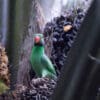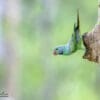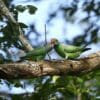Emerald-collared Parakeet
Also known as:
Layard's Parakeet
Also known as:
Layard's Parakeet
DID YOU KNOW?
The Asian parakeets’ history as pets goes back many centuries; the earliest parrot described in captivity was probably a Plum-headed Parakeet.

Nicopsitta

calthrapae
Size:
29 cm (11.3 in)
Weight:
100 g (3.5 oz)
Subspecies including nominate:
one
Colour Adult:
Male-Blue/grey head; black chin and stripe across lower cheeks; fine black line to sides of neck; broad emerald/green collar around hindneck; blue/grey upperparts; rump strongly washed with mauve/grey; yellow/green median wing coverts, forming visible patch on folded wing; deep blue tail tipped with pale yellow. Upper mandible red tipped with yellow, lower mandible brown. Eye pale yellow. Female-as in male but with minimal green on face. Black beak.
Colour Juvenile:
Grey of head replaced by green; green stripe on neck faint; green rump suffused purple/blue. Beak orange. Eye grey.
Call:
Calls are described as distinctive; in flight a harsh, chattering series of notes; flock in flight calls noisily.
More Information:
Content Sources:
CITES
BirdLife International
Cornell Lab of Ornithology/Birds of the World
Parrots: A Guide to Parrots of the World, Juniper and Parr, 1998
Parrots of the World, Forshaw and Cooper, 1977. 2010 edition
Parrots of the World, Forshaw, 2006.
Parrots in Aviculture, Low, 1992.
Parrots: Their Care and Breeding, Low, 1986.
Captive Status:
Rare
Longevity:
25-30 yrs
Housing:
Walk-in enclosure minimum length 3 m (9.8 ft).
Diet:
Small seed mix such as: canary, millet, and smaller amounts of oats, buckwheat, safflower and a little hemp; limited sunflower seed; spray millet; green leaves such as: Swiss chard, lettuce, dandelion, sowthistle, chickweed; seeding grasses; rearing food made from: hard-boiled eggs, wholegrain bread and carrot, all ground to crumbly consistency; fruits such as: apple, pear, orange, banana, pomegranate, cactus fruits; complete pellet.
Enrichment:
Bathing, swings, ladders, bird-safe wooden toys, non-toxic and unsprayed flowering, fir, pine, elder and willow branches, foraging/puzzle toys.
Nest Box Size:
Vertical box 8″ x 8″ x 20″ (20.3 cm x 20.3 cm x 50.8 cm).
Clutch Size:
3-4
Fledging Age:
6-7 weeks
Hatch Weight:
—
Peak Weight:
—
Weaning Weight:
—
World Population:
Unknown but reported as locally common. Decreasing.
IUCN Red List Status:
Least Concern
CITES Listing:
Appendix II
Threat Summary:
Not globally threatened. A BirdLife “restricted-range” species. Declining due to forest loss to plantations; also affected by the wild bird trade.
Range:
SW to central southern Sri Lanka.
Habitat:
Found up to 1700 m (5576 ft) in well-wooded areas including moist forest, tea plantations and botanical gardens, and forest edge.
Wild Diet:
Fruits of Macaranga tomentosa, wild fig and wild cinnamon, flowers of bomba tree, buds and nectar.
Ecology and Behaviour:
Seen generally in pairs or small groups. Feeds in forest canopy, and, when done foraging, chatter loudly and continuously. Compete fiercely with Plum-headed Parakeets for nesting sites.
Clutch and Egg Size:
3-4 rounded eggs, 24.5 x 19.5 mm (0.9 x 0.7 in)
Breeding Season:
January-May and sometimes July-September. Nest is high in hollow limb or trunk cavity.
Related Links:
—
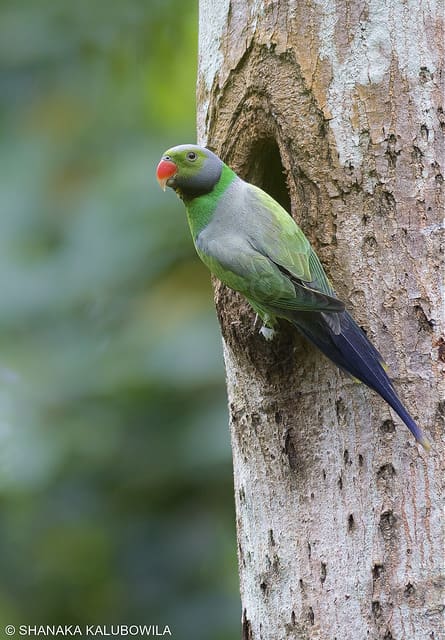
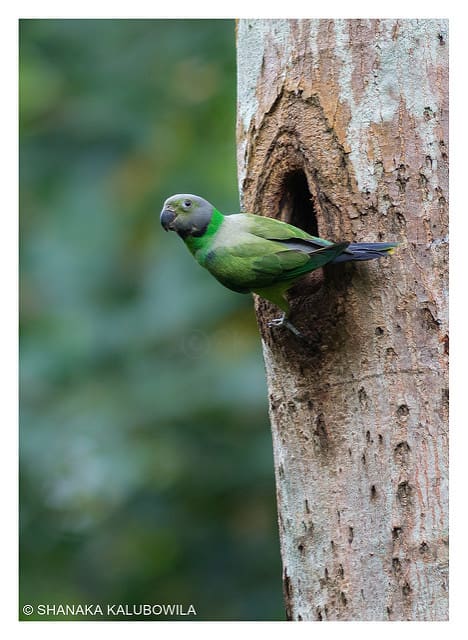
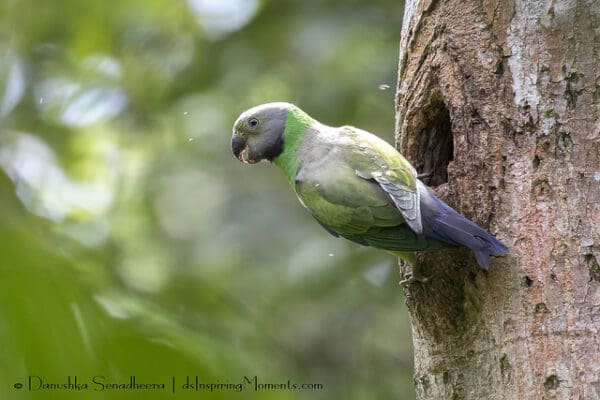
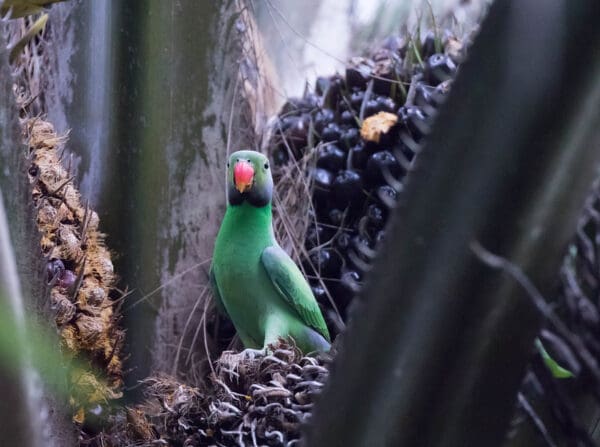
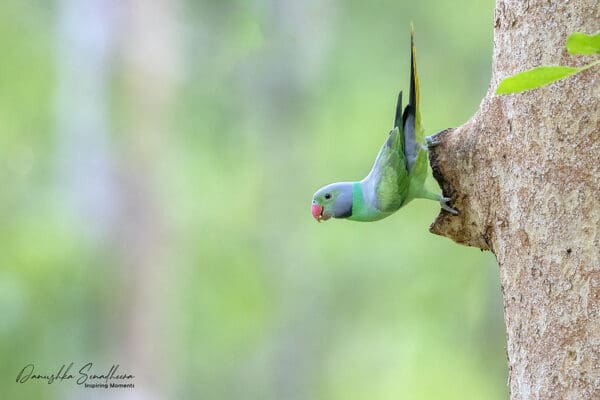

![© Shanaka Aravinda [CC BY-NC-SA 2.0] via Flickr A wild male Emerald-collared Parakeet perches by a nest](https://parrots.org/wp-content/uploads/2023/01/wpt_Emerald-collared-Parakeet_1281-4-100x100.jpg)
![© Shanaka Aravinda [CC BY-NC-SA 2.0] via Flickr A wild female Emerald-collared Parakeet clings to a nest entrance](https://parrots.org/wp-content/uploads/2023/01/wpt_Emerald-collared-Parakeet_1281-5-100x100.jpg)
![© Danushka Senadheera [CC BY-NC -SA 2.0] via Flickr A wild female Emerald-collared Parakeet perches at a nest cavity](https://parrots.org/wp-content/uploads/2023/01/wpt_Emerald-collared-Parakeet_1281-3-100x100.jpg)
